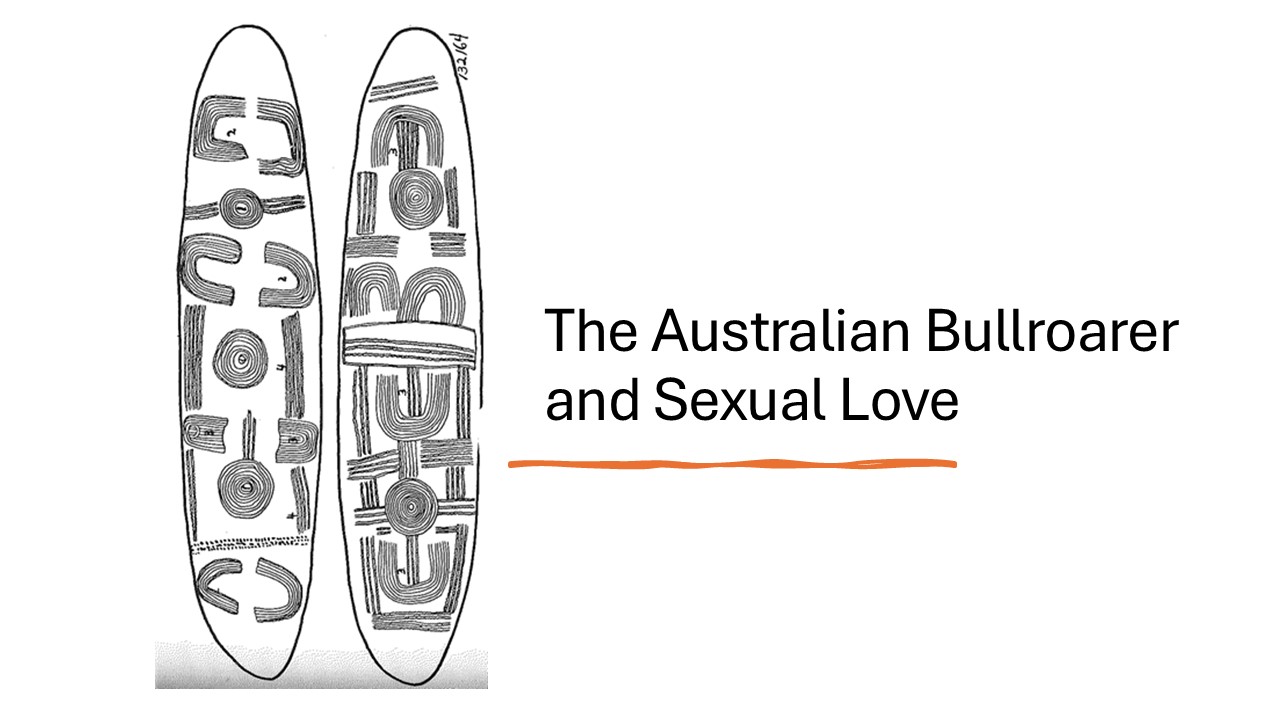Aboriginal Australians had a longstanding belief that tjurunga—the bullroarer—brings happiness in life and lovemaking. Why so and how? Over years, anthropologists explored the rituals associated with these culturally symbolic objects.
What is the Bullroarer?
The bullroarer is a famous Aboriginal Australian ritual object that aboriginal people call a tjurunga. Sometimes, in scholarly literature, a tjurunga is also spelled “churinga”.
Tjurunga is inscribed with both female and male imagery. It is considered a second self, one that connects a person to the landscape, a social group, and a mythical history.
There are two kinds of tjurungas: large and small. The large tjurunga is painted on wood or inscribed on stone. It is made just after childbirth, and it is kept hidden in the clan’s cave. The small tjurunga is the famous bullroarer, and it is made at the time of initiation.
The design elements on the tjurunga include concentric circles that depict the womb, naval, and vagina. Straight lines and the elongated shape of the tjurunga itself are phallic symbols. The tjurunga and its design elements are an example of the vulvic-phallic imagery discussed by Duff (1981) for the Northwest Coast art of First Nation peoples of Canada.
“Good Feelings Make Good Objects”
Hungarian anthropologist Géza Róheim studied the Aranda people, an indigenous Austronesian group living in central Australia.
According to Róheim, Aranda totemic myths and rituals are full of sexual imagery. The famous walkabout itself is construed as a sexual act, the male trekker penetrating the female landscape, leaving behind spirit children.
The mythical hero, Malpunga, walks about with his large penis sometimes slung over his shoulder. The central ritual pole is a phallic symbol planted in the female earth and symbolizing coitus.
For Róheim, the hole in the ground that is part of the initiation ceremony, the clan cave, and concentric circle designs all represent the female genital organ, and the rites associated with them represent lovemaking and social reproduction. For Róheim, “good feelings make good objects,” and, in this instance, he refers to the happy feelings associated with lovemaking and being in love. Róheim writes about an initiation ceremony recounted to him by a novice:
They all cling to the ceremonial pole (paternal penis) and sink into the earth. He describes how soft the earth was where he went in, how good it was to sink into it, and how he felt tjipa tjipa. To be tjipa tjipa means to be happy, a state of rapturous delight, ecstasy, as for instance in coitus. They go into the earth, they are tjipa tjipa and they become tjurunga. (Róheim 1945/1969, 157).
From Lovemaking to Self-Making
The American anthropologist Walter Goldschmidt called rituals “the language of sentiment” and the “second mode of communication” (Goldschmidt, 2006, 40).
According to Goldschmidt, rituals were a means to extend feelings of sexual and maternal love outward to achieve a unity of sentiment among larger groups of people. The sexual imagery of the tjurunga also represents parts of the landscape, such as mounds and riverbeds. In one sense, the tjurunga constitutes a map of the clan’s territory, identifying each member with a particular set of landmarks.
The tjurungas also serve as an illustration of ancestral myths. At initiation, individuals are assigned the identity of an ancestor. During the initiation ceremony, novices enter a daydream-like state, the “eternal dream-time period,” partly induced by the ritualization of sex and the sound of the whirling bullroarer, believed to be the voices of the dream-time ancestors (Ronald & Berndt, 1946).
The libido acts as a powerful psychic driver to induce alternate states of consciousness, akin to being in love. The tjurunga carries several meanings, including the happiness of lovemaking along with Aranda social organization, history, and territory. And through the ritual process, the tjurunga helps to constitute Aranda personhood rooted in happiness and the eternal.
You can learn more about cultural symbols of love and sex from Ian Skoggard’s video talk on “Representations of the Love Act across Cultures”
References
Duff, W. (1981). The world is as sharp as a knife: Meaning in Northwest Coast art. In D. N. Abbot (Ed.), The world is as sharp as a knife: An anthology in honour of Wilson Duff (pp. 209-224). British Columbia Provincial Museum.
Goldschmidt, W. (2006). The bridge to humanity: How affect hunger trumps the selfish gene. Oxford University Press.
Róheim, G. (1945/1969). The eternal ones of the dream: A psychoanalytic Interpretation of Australian myth and ritual. International Universities Press.
Ronald, M. & Berndt, C. H. (1946). The eternal ones of the dream. Oceania 17(1), 67-78.
